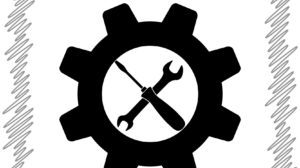The injection molding process is one that, although the baseline concept is simple, involves a number of intricate facets and moving parts (both literally and figuratively). The number of settings, calibrations, sub-processes, and choices that can be made or changed — even minimally — can have major effects on the finished product. Those effects include its quality, appearance and the time it takes to make it — among many others. What’s more, each of those aspects plays a part in another major component of a product — its cost and, by extension, its bottom line.
We’ve looked at many decisions you can make and best practices you can follow, in order to improve your part quality and run a more efficient injection molding process. Today, we’ll take a look at an aspect of the injection molding process itself: injection molding pack and hold times. These timing aspects — along with holding pressure in injection molding — can be considered the building blocks of the overall injection molding process, and they can make a big difference in your finished product, including its bottom line.
Let’s first define injection molding pack and hold times, and then look at some ways to optimize them.
The plastic injection molding process in a nutshell is, as mentioned above, fairly simple: Inject heated plastic substrate into a mold cavity and allow it to harden, cure or set. Eject the part, start the process over again. Though within that simple “elevator pitch” is a far more involved process. First among those is the injection process itself, which can be broken down into three separate actions (though some molders consider it as two, rather than three).
1. Fill: The fist part of the injection process is the “fill step,” where the majority of the substrate is injected (via gate or hot runner) into the mold cavity. In a perfect world, this would be the only step — the material gets injected, and would completely fill the mold. We must deal with, however, the realities of physics and the molecular makeup of the plastic base material. As the material is injected, it already begins to cool from its initial heated temperature, meaning that it begins to solidify and thus, shrink. Even if the material isn’t “solid” to the touch, its molecules are beginning that process — they’re moving closer together, meaning that the mold won’t be completely filled.
2. Pack: Since a 98 percent molded product won’t do the job, the injection process requires a few more steps. Next, we have the “pack step.” This is where even more of the base material is added to the mold cavity in order to compensate for that shrinkage — it’s literally “packed” in. Once the mold is totally filled, along with the gate through which the material is being injected, the point of “gate freeze” is achieved. This means that no more material can flow into the cavity or the gate and — importantly — injection pressure is being held at such a point that no material is backflowing out of the cavity. The gate, thus, is frozen. More in a bit on how to determine when this actually occurs.
3. Hold: Gate freeze coincides with the “hold step,” which is a necessary buffer to ensure that the mold is filled as it should be, the holding pressure is keeping all the material where it’s supposed to be, and the part can be moved to the next step in the process: cooling and ejection. Depending on the size and format of your product, all of this will usually occur in less than a minute.
Now that you understand the more involved parts of the injection molding process, we can take a look at how to optimize pack and hold times. Finally, we’ll cover a bit more about just why it’s so important to understand these concepts, and to know how to improve them.

The only way to reliably gauge and adjust pack and hold times is through testing. Though it may take some extra time and resources, you can reap significant benefits by testing and zeroing in on the optimal pack and hold times for each part you produce.
Pack and hold time testing is done through weight. During the fill phase, the weight of the mold increases rapidly, as 95 percent (or more) of the required material is added. This rapid increase lessens (if you think of a chart, the weight increase begins to flatten) as the weight increase becomes more gradual during the pack phase. And, thinking of that graph again, you’ll see the weight of the mold level out as the gate freezes and no more material can be added.
Time-wise, you can optimize and reduce cycle times by identifying the moment of gate freeze — zeroing in on just when the mold weight becomes level. A best practice is to add one second of hold time here, and then end the cycle. By spending the minimum time necessary to produce an acceptable part, you can ensure that you’re not wasting any cycle time in production.

Knowing pack and hold times can also help to improve part quality, reducing rejected parts and cutting down on the need to run additional production cycles. If defects are an issue — such as sink or cavities in parts — you’ll need to take a look at pack and hold times as well as injection pressure. Trial and error is typically the most effective way to tackle these issues, and though it may be time consuming, the potential cost savings will typically repay the effort. For quality issues, it’s important to be sure that injection pressure is facilitating gate freeze, ensuring that none of the packed material is returning to the gate. Hitting the ideal intersection of timing and pressure can go a long way in lowering the number of rejected and/or defective parts that you see.
If you’re questioning the value of running tests to optimize your process in this area (or if you’re an entrepreneur and your injection molding supplier doesn’t seem to think it’s worth it), consider this: Even a difference of one or two seconds can make a huge impact on your overall production time when scaled to a full run. As with anything else in business, production time equals money, so your bottom line can see a real improvement (or hit) depending on how much attention is paid to pack and hold times, and other more detailed parts of injection molding. Be sure to use this knowledge to manage your production process accordingly.



